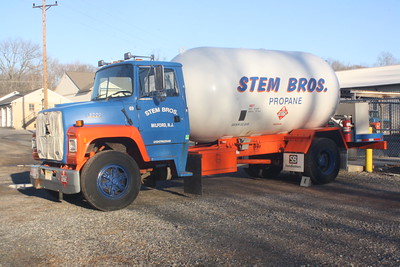
Knowing how much propane is left in your tank is really important. Propane is used for many things like grilling, heating, and running appliances. If you run out of propane unexpectedly, it can be a big hassle.
That’s why it’s helpful to understand how to measure the propane left in your tank. This way, you can always be prepared and never get caught without fuel when you need it.
Weight of 1 Gallon of Propane
One gallon of propane weighs about 4.2 pounds. This is a standard measurement used in the industry. However, a few factors can make this weight change slightly.
Temperature: When it gets hotter, propane expands and takes up more space, so it might weigh a bit less. When it’s colder, propane contracts and takes up less space, so it might weigh a bit more.
Pressure: The pressure inside the tank can also affect the weight. Higher pressure can make the propane denser, while lower pressure can make it less dense.
In general, though, you can rely on the fact that 1 gallon of propane is roughly 4.2 pounds. This helps you figure out how much propane you have left in your tank by comparing the weight.
Why You Need to Know How Much 1 Gallon of Propane Weighs
Knowing that 1 gallon of propane weighs approximately 4.2 pounds (1.9 kilograms) is very useful for several reasons:
- Planning and Usage: If you know how much propane you’re using, you can plan better. For example, if you’re going on a camping trip and your stove uses 1 pound of propane per hour, you can calculate how many gallons you’ll need to take with you.
- Refilling: When you refill your propane tank, understanding the weight helps you know when it’s full. For instance, a standard 20-pound (9.1 kilograms) tank is designed to hold about 4.7 gallons (17.8 liters) of propane. By weighing the tank, you can ensure it’s filled correctly to avoid overfilling, which can be dangerous.
- Cost Efficiency: Knowing the weight helps you monitor your usage, so you’re not caught off guard when you run out. This can save you time and money because you can refill your tank before it’s completely empty. For example, if you have a 100-pound (45.4 kilograms) tank, which holds about 23.8 gallons (90.1 liters) of propane, you can track how much is left and when it needs refilling.
- Safety: Propane is a safe and efficient fuel, but it’s important to handle it correctly. Overfilling a tank can lead to excessive pressure and potential leaks. By knowing the weight, you can ensure you’re not exceeding the tank’s capacity. For example, the “tare weight” (TW) of a 20-pound tank might be 17 pounds (7.7 kilograms), meaning the total weight of a full tank should be around 37 pounds (16.8 kilograms).
- Accurate Measurements: For appliances that need a specific amount of propane, knowing the weight allows you to measure accurately. For instance, if a generator requires 5 gallons (19 liters) of propane to run for a specific duration, knowing the weight helps ensure you’re providing the correct amount of fuel.
Overall, understanding how much 1 gallon of propane weighs helps you use it more efficiently, safely, and cost-effectively by incorporating precise measurements and industry standards.
How to Find Out How Much Propane is Left
Weighing the Tank
Using a Bathroom Scale:
- Empty Tank Weight: First, weigh your propane tank when it’s empty. Let’s say it weighs 17 pounds (this is called the tare weight, often stamped on the tank as “TW”).
- Full Tank Weight: Next, weigh the tank when it’s full. For example, a standard 20-pound tank will weigh about 37 pounds when full (20 pounds of propane + 17 pounds tare weight).
- Current Weight: To find out how much propane is left, weigh the tank again when you want to check it. Let’s say it now weighs 27 pounds.
- Calculate Propane Left: Subtract the tare weight (17 pounds) from the current weight (27 pounds). This means you have 10 pounds of propane left.
Using the Tare Weight
- Define Tare Weight: The tare weight is the weight of the empty tank, usually stamped on the side of the tank as “TW.”
- Current Weight: Weigh your tank to get the current weight. Let’s say it’s 27 pounds.
- Subtract Tare Weight: Subtract the tare weight from the current weight. For example, if the tare weight is 17 pounds, and the current weight is 27 pounds, then:
- 27 pounds (current weight) – 17 pounds (tare weight) = 10 pounds of propane left.
The Hot Water Method
Checking Propane Levels with Hot Water:
- Pour Hot Water: Pour a small amount of hot water down the side of the propane tank. Be careful, the water should be hot but not boiling to avoid burns.
- Feel the Tank: Run your hand down the side of the tank. You will feel a warm area and then a cooler area.
- Identify the Propane Level: The cool part of the tank is where the propane level is because propane absorbs heat. The warm part is where there is no propane.
This method helps you quickly check how much propane is left without any tools.
Weight of Propane Tank: Different Sizes and Capacity
| Tank Size | Empty Weight (Tare Weight) | Propane Capacity | Full Weight | Common Use |
|---|---|---|---|---|
| 20-Pound Tank | 17 pounds | 20 pounds | 37 pounds | BBQ grills, patio heaters, small appliances |
| 30-Pound Tank | 25 pounds | 30 pounds | 55 pounds | RVs, travel trailers, medium-sized appliances |
| 40-Pound Tank | 29 pounds | 40 pounds | 69 pounds | Larger appliances, stoves, residential heating |
| 100-Pound Tank | 68 pounds | 100 pounds | 168 pounds | Heating, cooking, commercial use |
| 420-Pound Tank (100-Gallon Tank) | 275 pounds | 420 pounds | 695 pounds | Home heating, large commercial applications, industrial use |
Understanding Tank Ratings
Propane tanks are rated by the weight of the propane they can hold, not by the weight of the tank itself. This rating helps users understand how much propane they have available for use. For example, a 20-pound tank is named for its ability to hold 20 pounds of propane, not for its overall weight when full.
Why It Matters
Knowing the weights and capacities of different propane tanks helps you choose the right size for your needs. Whether you’re grilling in the backyard or heating your home, selecting the appropriate tank ensures you have enough propane on hand and can manage your usage effectively. It also aids in safe handling and storage, as overloading or improper use of propane tanks can lead to safety hazards.
By understanding these details, you can make informed decisions about your propane use and ensure that you’re always prepared with the right amount of fuel for your activities.
To Make a Conclusion
Knowing that 1 gallon of propane weighs about 4.2 pounds is more than just a fun fact; it’s a practical piece of knowledge that can help you manage your propane usage efficiently and safely.
Whether you’re planning a barbecue, preparing for a camping trip, or simply ensuring your home appliances run smoothly, understanding the weight of propane helps you keep track of how much you have left.
By using simple methods like weighing the tank or using the hot water trick, you can easily monitor your propane levels and avoid any inconvenient surprises.
Always remember, being informed about your propane usage not only saves you time and money but also ensures that you handle this valuable resource safely and effectively.

Mike is an experienced propane technician with over 15 years of professional experience in the field. He has dedicated his career to helping customers with their propane needs, from installation to maintenance and repair. Together with Jeremy, he co-founded this website to provide useful information and guidance to customers seeking reliable propane services.



